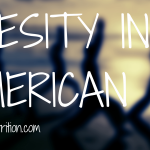Eating Your Way to Healthy Blood Pressure: A Guide to Lowering Hypertension
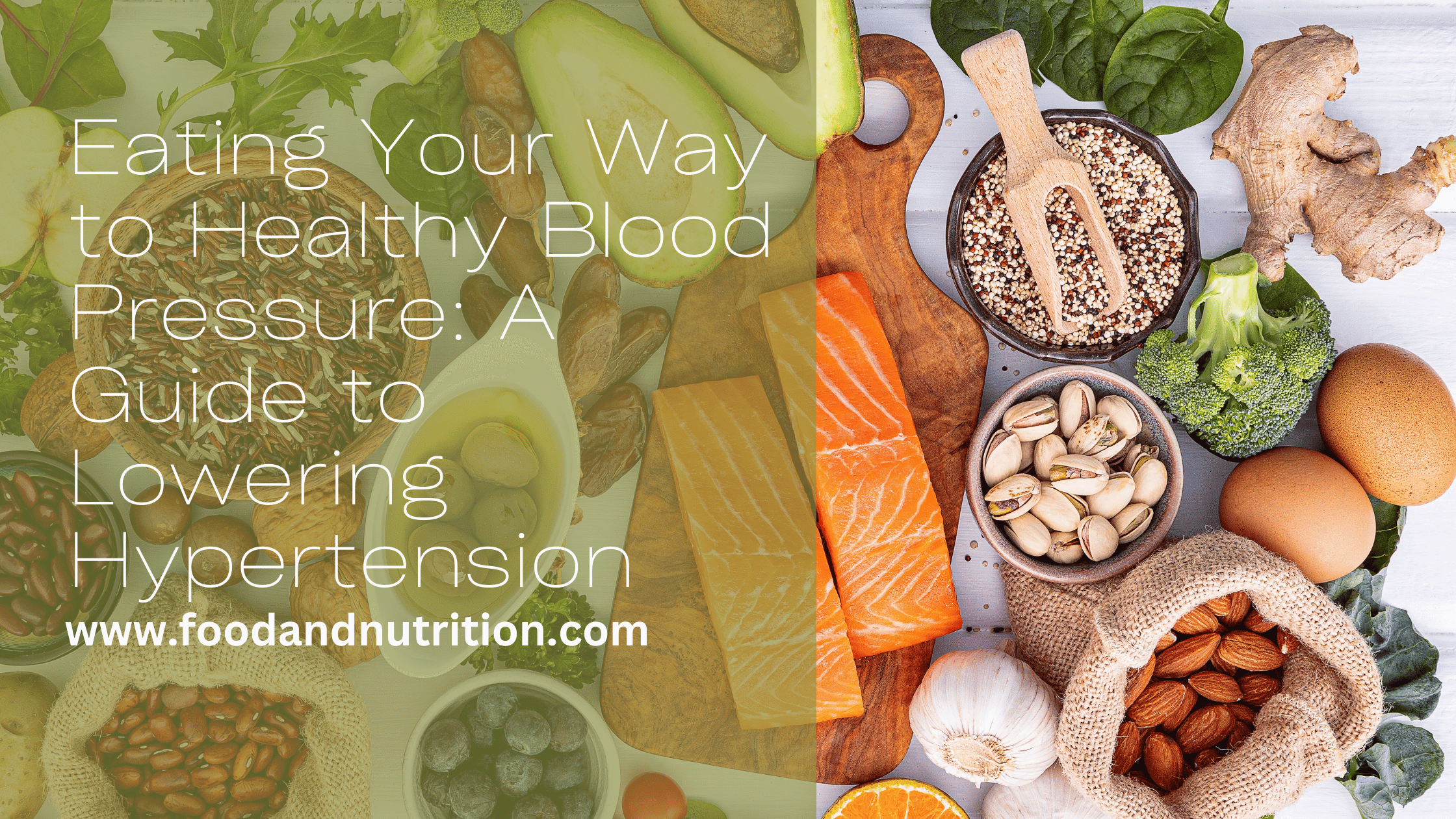
High blood pressure, or hypertension, is often referred to as the “silent killer” because it often goes unnoticed until it leads to severe health issues like heart disease, stroke, or kidney problems. But here’s the good news: you have more control over your blood pressure than you might think. One of the most powerful tools in your arsenal is your diet. In this comprehensive guide, we’ll explore how nutrition education can be your path to managing and lowering high blood pressure effectively.
Understanding High Blood Pressure
Before we dive into dietary solutions, let’s understand what high blood pressure is and why it matters. Blood pressure is the force of blood pushing against the walls of your arteries as your heart pumps it around your body. When this pressure becomes consistently too high, it can damage your arteries and put extra strain on your heart.
Several factors can contribute to high blood pressure, including genetics, lifestyle, and diet. The first step to managing it is recognizing the problem. That’s why it’s crucial to regularly monitor your blood pressure, especially if you have risk factors such as a family history of hypertension or an unhealthy lifestyle.
The DASH Diet – Your Ally Against Hypertension
One dietary approach that has been scientifically proven to lower blood pressure is the DASH diet, which stands for Dietary Approaches to Stop Hypertension. The DASH diet is more than just a diet; it’s a lifestyle change that promotes a balanced and heart-healthy way of eating.
The core principles of the DASH diet include:
- High intake of fruits and vegetables: These nutrient-packed foods provide essential vitamins, minerals, and antioxidants that support overall health and lower blood pressure.
- Emphasis on whole grains: Whole grains like brown rice, quinoa, and whole wheat bread are rich in fiber, which helps regulate blood pressure.
- Lean protein sources: Choose lean proteins like skinless poultry, fish, beans, and tofu to reduce saturated fat intake.
- Low-fat dairy products: Opt for low-fat or fat-free dairy to get the benefits of calcium and protein without excessive saturated fat.
- Reduced sodium intake: The DASH diet limits sodium (salt) intake to help control blood pressure. This includes reducing salt in cooking and avoiding high-sodium processed foods.
Reducing Sodium for Better Blood Pressure
Speaking of sodium, let’s dig deeper into why it’s a concern and how you can reduce your intake:
Sodium is a mineral that plays a vital role in regulating fluid balance in the body. However, when consumed in excess, it can cause your body to retain fluid, leading to increased blood pressure. High sodium intake is often associated with processed and restaurant foods. One way to manage your sodium intake is by reading food labels. Look for products labeled “low sodium” or “no added salt.”
Another strategy is to cook more meals at home. When you cook, you have complete control over the ingredients, and you can use herbs and spices to add flavor without relying on salt. Be mindful of condiments, which can be hidden sources of sodium. Opt for low-sodium versions or use them sparingly.
Potassium and Magnesium – Nutrients for Blood Pressure Control
Potassium and magnesium are two essential minerals that can help lower blood pressure:
- Potassium: This mineral counteracts the effects of sodium and helps your body regulate blood pressure. Foods rich in potassium include bananas, sweet potatoes, spinach, oranges, and tomatoes.
- Magnesium: Magnesium plays a role in relaxing blood vessels, which can help lower blood pressure. You can find magnesium in foods like nuts, seeds, whole grains, and leafy green vegetables.
Incorporating these foods into your diet can support your blood pressure management efforts.
Heart-Healthy Fats and Fiber
When it comes to dietary fats, not all are created equal:
- Healthy fats: Unsaturated fats, like those found in avocados, nuts, seeds, and olive oil, can help reduce inflammation and support heart health.
- Unhealthy fats: Saturated fats, often found in red meat and full-fat dairy products, and trans fats, found in many processed foods, can raise blood pressure and increase the risk of heart disease.
In addition to choosing healthy fats, increasing your fiber intake is crucial. Fiber-rich foods such as beans, lentils, whole grains, and fruits and vegetables can help lower blood pressure and improve overall heart health.
Sugar, Alcohol, and Caffeine – The Moderation Message
Managing your blood pressure isn’t just about what you should eat; it’s also about what you should limit:
- Sugar: Excessive sugar intake can lead to weight gain, which is a risk factor for hypertension. Be mindful of added sugars in processed foods and sugary drinks.
- Alcohol: While some studies suggest moderate alcohol consumption may have cardiovascular benefits, excessive drinking can raise blood pressure. If you choose to consume alcohol, do so in moderation.
- Caffeine: Caffeine can temporarily raise blood pressure, so if you’re sensitive to caffeine, consider limiting your intake. However, for many people, moderate caffeine consumption is not associated with long-term hypertension.
Meal Planning and Cooking Tips
Now that we’ve covered the essentials of a blood pressure-friendly diet, let’s discuss how to put it into practice:
- Meal planning: Planning your meals in advance can help you stick to a heart-healthy diet. Include a variety of DASH-approved foods in your weekly meal plan.
- Cooking techniques: Experiment with cooking techniques that enhance flavor without relying on salt. Try grilling, roasting, or steaming your vegetables and using herbs and spices liberally.
Lifestyle Factors for Blood Pressure Control
Diet is just one piece of the puzzle when it comes to managing your blood pressure. Lifestyle factors play a crucial role as well:
- Stress: Chronic stress can raise blood pressure. Incorporate stress-reduction techniques such as mindfulness, deep breathing, or yoga into your daily routine.
- Physical activity: Regular exercise can help lower blood pressure and support overall cardiovascular health. Aim for at least 150 minutes of moderate-intensity aerobic activity per week.
Monitoring and Seeking Professional Guidance
Your journey to healthier blood pressure should include regular monitoring and professional guidance:
- Monitoring blood pressure: Regularly check your blood pressure at home or during medical check-ups. Monitoring helps you track your progress and make necessary adjustments.
- Professional guidance: Consult with a healthcare provider or a registered dietitian for personalized advice. They can help you create a tailored plan that meets your specific needs.
- Supplements: While some supplements like potassium, magnesium, and omega-3 fatty acids may be beneficial, it’s essential to discuss their use with a healthcare provider to ensure they’re appropriate for you.
Conclusion
In conclusion, managing and lowering high blood pressure is within your reach, and it starts with what you put on your plate. By adopting a DASH-style diet rich in fruits, vegetables, whole grains, lean proteins, and low-fat dairy, and by reducing sodium and unhealthy fats, you can make significant strides in improving your blood pressure and overall heart health.
Remember that these dietary changes are part of a broader strategy that includes stress management , regular physical activity, and monitoring your blood pressure. Take small, sustainable steps toward a healthier lifestyle, and don’t hesitate to seek professional guidance along the way. Your heart will thank you for it.
Resource Section
For readers looking to dive deeper into managing and lowering high blood pressure through diet, we’ve compiled a list of helpful resources:
DASH Diet Resources
- DASH Eating Plan from the National Heart, Lung, and Blood Institute: Visit NHLBI DASH Eating Plan
- DASH Diet Guide from Mayo Clinic: Gain insights on DASH diet principles, benefits, and how to get started with this comprehensive guide. Read the Mayo Clinic’s DASH Diet Guide
Sodium Reduction
- American Heart Association’s Guidance on Reducing Sodium Intake: AHA Sodium Reduction Tips
- CDC Tips for Cutting Down on Sodium: CDC Sodium Reduction Advice
Potassium and Magnesium
- NIH Fact Sheet on the Importance of Potassium: NIH Potassium Information
- Mayo Clinic Article on Magnesium and Blood Pressure: Mayo Clinic on Magnesium
Lifestyle Factors
- American Heart Association’s Recommendations on Physical Activity and Blood Pressure: AHA Physical Activity Guidelines
- CDC Guide on Managing Stress for Heart Health: CDC Stress Management
Monitoring and Professional Guidance
- American Heart Association’s Information on Home Blood Pressure Monitoring: AHA Home Monitoring
- Find a Registered Dietitian in Your Area through the Academy of Nutrition and Dietetics: Find an RD
Remember, while this blog post provides a comprehensive guide, seeking professional guidance from your healthcare provider or a registered dietitian can help you create a personalized plan to manage your blood pressure effectively.
- Eating Your Way to Healthy Blood Pressure: A Guide to Lowering Hypertension
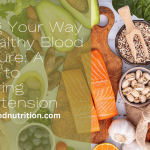
- Unlock the Flavor: The Ultimate Guide to Cooking Salts

- Hydration Mastery for Athletes: Track & Field Performance Boost
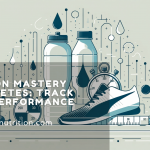
- Salt & Heart Health: Unveiling the Truth Behind Sodium Intake
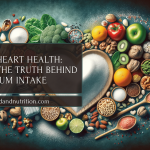
- Boost Immunity with Nordic Diet: A Guide for Healthier Living
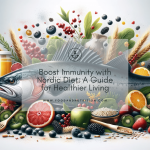
- Tackling Obesity: Practical Strategies for Healthier Lives
